Erasing Autism: The Spectrum Balance Protocol
April 3, 2015
1980s: 1 in 10,000 – 1990s: 1 in 2,500
2014: 1 in 68 – 2024: 1 in ???
Erasing Autism: The Spectrum Balance Protocol
Autism, A modern Epidemic?
This book is the story of a passionate doctor and her 3,000+ kids.
A few years ago, Dr. Shauna Young, PhD., CTN, suspected that some of her Autistic clients had a brain chemical imbalance. In other words there seemed to be an excess of manganese compared to iron in their tests.
Digging deeper, she found an almost forgotten disease called Manganese Madness or Manganism that affected manganese miners. Its symptoms are described as follow: “Manganism is a biphasic disorder. In its early stages, an intoxicated person may experience depression, mood swings, compulsive behaviors, and psychosis. Late-stage manganism include weakness, monotone and slowed speech, an expressionless face, tremor, forward-leaning gait, inability to walk backwards without falling, rigidity, and general problems with dexterity, gait and balance.” [1]
Several recent studies examined the effects of chronic low-dose manganese overexposure on development in children. One recent one in Quebec, Canada “examined school children between the ages of 6 and 15 living in homes that received water from a well containing 610 µg Mn/L; controls lived in homes that received water from a 160 µg Mn/L well. Children in the experimental group showed increased hyperactive and oppositional behaviors.” [1]
Where could that excess manganese be coming from?
For a small child, there are many possible sources.
= Before birth: mom’s diet, prenatal supplements, assorted junk foods, Candida yeast infection.
= After birth: premature babies nutrition IV fluids, lack of breast feeding, use of commercial soy-based formulas high in phytates and manganese, after birth dietary supplements.
= Baby food: teething biscuits, oatmeal and other breakfast cereals, most multivitamins. Also, spelt, brown rice, soy and oats that have been touted for ages as “health foods” are among the worst offenders.
= As they age: lack of absorbable iron in our diet. Vegetarian and vegan lifestyles do not provide enough of the heme iron contained in meat. Heme iron is better utilized by our body and more resistant to phytates included in grains.
Food sources of manganese
– Bread: Whole Wheat; Whole-Wheat English Muffin; Whole-Wheat Pita; Whole-Wheat Roll; and other wheat products.
– Beans: Adzuki Beans; Black-eyed peas; Butter, Lima, Navy, Pinto, Black, cooked; Chickpeas; Garbanzo beans; Green beans; Kidney Beans; Soybeans; Winged Beans; White Beans; Lentils and Peanuts.
– Fish: Sea Bass, cooked; Trout; Pike; and Perch.
– Fruits: Pineapple; Raspberries; Strawberries; Blueberries; Cranberries; Bananas; Kiwi fruits; and Figs.
– Grains: Oats; Brown rice; Rye; Barley; Quinoa; Wheat; Buckwheat; Millet.
– Herbs: Garlic; Basil; Oregano; Thyme; Dill and Parsley.
– Nuts: Hazelnuts; Pecans; Walnuts; Macadamia; Almonds; Cashews; and Pistachio.
– Seafood: Mussels; Clams; Crayfish; Sea vegetables.
– Seeds: Pumpkin seeds; Sesame seeds; Flax seeds; Sunflower seeds.
– Soy products: Tofu – firm, raw; tempeh, soy sauce and assorted processed soy products.
– Spices: Cloves; Cinnamon; Black pepper; Turmeric; Cumin; Mustard seeds; Peppermint.
– Tea: One cup of green tea contains about 0.41-1.58 milligrams of manganese and one cup of black tea contains about 0.18-0.77 milligrams; a cup of instant tea contains.
– Vegetables: Amaranth Leaves; Asparagus; Beets; Beet Greens; Bell peppers; Bok Choy; Broccoli; Brussels sprouts; Cabbage; Carrots; Cauliflower; Celery; Chili peppers; Collard greens; Corn; Cucumber; Eggplant; Fennel; Green peas; Leeks; Mushrooms, Cremini, Shiitake; Mustard greens; Napa Cabbage; Onions; Potatoes; Winter and Summer squash; Romaine lettuce; Spinach, cooked and frozen; Swiss Chard; Tomatoes; Kale; Sweet potatoes.
– Oh, and let’s not forget… no fast food, no junk food and no processed food. All of them contain the dangerous foods named above, especially grains and sugar.
Note: please keep in mind that this list is only valid in case of a suspected manganese overload.
The Menefe syndrome
Since the elemental table abbreviation for manganese is MN, and iron is FE, Dr. Shauna began referring to this condition as the “Menefe Syndrome.” And thus created the Spectrum Balance Protocol based on a Paleo-type diet but focused on eliminating the list of manganese-loaded foods above. Sounds simple enough, right? So why has it been so difficult for Dr. Shauna’s protocol to be accepted as a valid solution? Mystery!
What is currently done to help these young patients?
Currently, there are a lot of different sources of help for patients affected by issues ranging from ADD/ADHD, Asperger, Autism as well as depression and anti-social behavior. They range from a cocktail of drugs and supplements to assorted physical and verbal therapy. All of these protocols can help for sure but why not keep it simple and try this easy diet protocol?
Will my kid resist this diet?
In Dr. Shauna’s experience, no matter how strong their objections, kids will eat the food from the Protocol when they get hungry, even if they threaten to go on hunger strike. Sometimes, if the parents are the ones resisting, it might be worth asking the affected child directly. After all, they are the first concerned.
The whole family should be on this diet
I know, I know. What a drag! But if you want the best results for your child, the whole family must follow the diet so that he/she does not feel ostracized and “special”. I’m looking at you dads. It seems that dads can be the most resistant to their kid’s change of diet. If you’re going to cheat, please do it outside your home and away from your kid.
Important word of caution: no cheating allowed
It should be known that this protocol, although simple, must be followed to the letter. No cheating allowed. No such thing as “a little bit can’t do harm.” Unfortunately, people outside of the immediate family might think, “a little cookie won’t hurt”, right? Wrong! This little cookie could set back your kid a few weeks back and the symptoms might come back with a vengeance. So well-wishing friends, grand-parents, school teachers and other moms, please check with that kid’s mom before you offer them that “innocent” cookie.
Is the protocol restrictive?
Since there is a limited list of food in the beginning (Phase 1), it might be assumed that it will be near impossible to feed your child on this diet. First off, you should know that you will need to cook all of his/her food from scratch (or, if you have the means, hire a private chef). The first few days might not be easy but as soon as you will see the amazing improvements, you will have no problem continuing. As you child gets better, feel free to expand his/her diet to Phase 2 and then later on, to Phase 3. For help in finding suitable recipes, do a Google search starting with the word Paleo, as in “Paleo Breakfast.” Since the paleo diet is so widely accepted, there are tons of recipes out there. Just make sure to avoid or substitute the potentially dangerous food for a safer option.
What are the results?
Among the thousands of patients she helped, Dr. Shauna offers in her book some of the most salient examples of her protocol success. Here are a few I picked from (for their complete story, please read the book):
Garth: Mom, “Within 3 days, the lights came on.” After three months: “He’s on fire.”
Paxton: Mom, “For the first time in his life we can cuddle with him. He asks for us to lay down at night with him now. He would never cuddle and now he loves it.” After two months, “It’s so exciting. He’s just a typical two-and-a-half-year-old boy.”
Dylan: After one month: Mom, “He really understands some very mature things and he knows the diet is helping.”
Bailey: Mom, “She’s very approachable, cuddly, and happy.” “She’s having firm poops for the first time in her life”
Cate: After two months: Cate, “I did really well. I know everything I can eat and that’s what I eat.” “Oh, I’m really good at everything now. Doing so good in school makes me really happy.”
Cole: After one month: Mom, “Not only is he talking but he’s connecting words when he’s worked with. He has apraxia, which makes it more difficult to understand him, but he’s trying so hard.” “He has an opinion now. It’s awesome!”
Cooper: After two months: Mom, “He’s able to talk about topics and he can stay on track.” “He’s happy and coping now. I can’t believe it!”
… and much more… in the book, Erasing Autism: The Spectrum Balance Protocol.
Raise The Bar!
Usually, the biggest stumbling blocks to this protocol are not the kids but the parents. I know, you may have tried everything under the sun before and are tired of hoping without tangible results. Another diet or protocol seems like a lost cause. Plus, it can be hard for the whole family to change its habits again but it’s all for your kid’s benefit. Don’t settle for a little improvement. The goal is for your kid to regain his/her health and return to being a regular kid again. You should not keep your expectations too low. Instead, you should raise the bar and expect the protocol benefits to help your kid fully. After all, it’s healthy food. It can’t hurt, right?
The only real answer to autism is not treatment – it is eradication!
Yes, your kid is special but…
Another thing to keep in mind is that although your autistic child is special and deserves to be loved just as he/she is, it does not mean he/she cannot heal or get better. By refusing this “new” but simple (too simple by some people’s expectations?) protocol just because your kid is “special” and should not be seen as a pariah, you’re not doing him/her a favor. Please adjust your expectations and believe that this protocol can help your child get better. Remember, it’s all about your child, not you. Your child does not want to be “special”. Given the chance, they would love to be a “normal” child. If you doubt that, please ask them. Ask them if they are happy the way they are. You may be surprised by the answer.
The No Harm Foundation
Seeing that her protocol was not getting enough exposure, Dr. Shauna and her brother decided to start a non-profit organization, the No Harm Foundation, to spread the word and offer this protocol at no charge. Yes, you read right… it’s FREE. Won’t you give it a try? By the way, this organization is run by volunteers and, if you like this protocol, they would appreciate a donation to help support their efforts.
My final impression
I admire Dr. Shauna’s persistence in trying to get the word out on her protocol. She quit her job while she was writing this book. It shows her dedication to your kids’ health.
As a culinary, food-based nutritionist myself, I can’t help to admire the simplicity of this protocol. If you, as parents, are faced with a child with any of the above issues, why not give a try to Dr. Shauna’s diet protocol. I personally give it a two French thumbs up.
I sincerely hope you will take a (small) chance and give this amazing diet a try for your child’s sake. The minimal efforts needed are well worth the results.
Bonne chance! – Good luck!
Alain Braux
Culinary Nutritionist
[1] Manganism
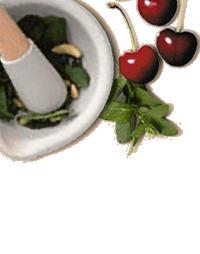
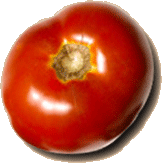
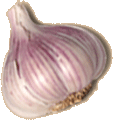
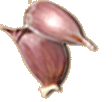
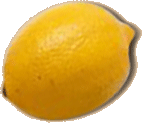




leave a comment